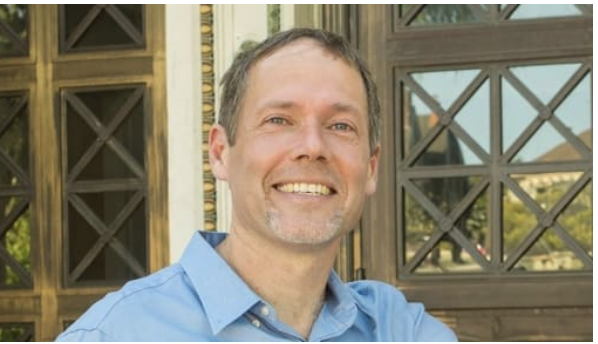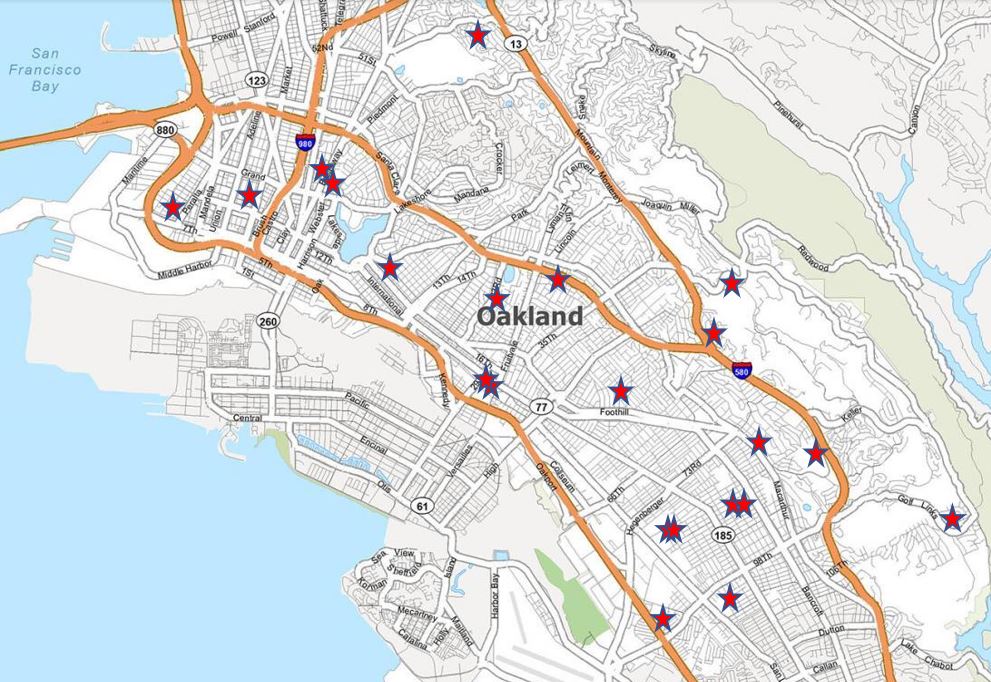
As Oakland schools continue to address a range of new challenges including pandemic after-effects, declining enrollsment, charter school conversions, and increased parental challenges, Sam Davis begins his term as OUSD School Board President. Davis formerly taught family literacy for parents at the Manzanita campus, in a program for limited English speakers. He has also taught math at Cal State East Bay, Contra Costa College, and Laney College.
Davis brings a combined perspective as a parent of a high school student and former OUSD teacher. Davis represents District 1, which he was elected as a board member in 2021 and was Vice President of the Board. His district includes schools such as Oakland Tech High School, Chabot Elementary, and Sankofa United Elementary. Davis responded to questions on some of the current issues the district is facing. This interview has been edited for length and clarity.
What made you decide to seek a seat on the OUSD school board?
I’d been involved in the schools for many years, as a teacher and a parent. Seeing how people at school sites were pouring their hearts into their work, and just feeling unsupported, trying to do their best for kids – I just wanted to try and help figure out how things could be better, what could bring more resources to school sites, why were things so out of balance in Oakland Unified.
“It really helps to go to school sites and see all the great things that are happening.”
– Sam Davis, OUSD School Board President
What issues and objectives did you run on?
One was making sure that there was community engagement around major decisions, that people felt like they had a voice, [including] parents, and staff. I think trying to manage our budget well, to bring ourselves out of receivership. We went into receivership in 2003, because the district at that time had trouble managing the budget, and the state used that as a pretext to plunge the district into this really long period of receivership. And under receivership, the district took out more loans than the state made them take out. That’s why it’s taken a long time to pay off the loans. And we’re still not out of it.
What have you learned?
I have learned to have a thick skin. I’ve gotten a lot of criticism. I’ve learned that just because people are angry at you, doesn’t mean that you are wrong. It really helps to go to school sites and see all the great things that are happening. I remind myself that we’re doing important work, when I see folks doing the work on the ground, and who still feel that they don’t have the resources they need. The pandemic gave us an appreciation for what a crucial role schools play in our society as gathering places for the community and how crucial education is for our students. It’s very motivating to me to see all the positive things that are happening even as I also see that there are plenty of ways that we need to improve.
What are the big challenges?
The biggest challenge in Oakland has been sustainability; given declining enrollment and the number of schools, which means that we’re stretched very thin.
The other biggest challenge is the lack of trust in the district because of the complicated history. The district is much better managed today than it was 10- 15 years ago, but that trust is still lacking.
“I’ve learned that just because people are angry at you, doesn’t mean that you are wrong”
Why do you think you were chosen as president of the school board this year?
One of the board members has to nominate you, or you can nominate yourself. I was nominated by Mike Hutchinson, who was president last year. It’s new every year; whoever the seven of us are. We choose amongst ourselves. Depending on the board, whoever people feel has the leadership skills necessary will be elected.

What are your main objectives?
My biggest two goals for this year as president are first getting out of receivership. We need to have better board governance. There’s just been a lot of friction on our board. I think part of that is having more study sessions that bring board members together, so we’re educated on the issues and then more communication between us as well, because that lack of trust is seeping into our relationships on the board.
The other thing is there is such a desperate need for more housing, more affordable and workforce housing in Oakland, and we have some vacant property. I’m working with Assemblymember Mia Bonta on some legislation. I’m trying to get resources to support building affordable and workforce housing on some of the unutilized properties for teachers and other staff. The former adult education site, Edward Shands, is already leased to a developer as the basis for building the apartments.
In 2022, I led the campaign to renew the College and Career for All, which was Measure N, and then we got it renewed with a 82% yes vote. It renews a parcel tax that funds the high schools. Measure N increased our graduation rate by 15%.
Measure Y, which is the facilities bond, is $735 million over a long period of time for school construction and renovation. In the midst of a really difficult time, last year, we reallocated the funds more equitably for schools in the flatlands. It was just and passed; the board passed it unanimously. I was chair of the committee that helped shepherd that change through.
What do you think about the number of charter schools in Oakland and should OUSD limit new charter schools?
In the past four years, four public schools have closed or merged, and four charters have closed. We’re seeing a reduction in charter schools since I was elected. A lot of it is the impact of the pandemic. Charter schools didn’t do very well during the pandemic. It turns out when you have a global pandemic, you need the central district to help you with the COVID testing and the masks and the vaccines and the contact tracing, so there has actually been a big decline in charter enrollment since the pandemic started.
Governor Newsom extended all of the charter terms by three years during the pandemic, because he said, “Oh, it’s the pandemic, we can’t hold them accountable right now, there’s not the data, on whether they’re being successful or not, so we’ll just give them them three more years on the charters.” So, we as the board, because we’re all new on our board, none of us have ever actually voted on a charter renewal, but we denied a charter school that was trying to form. They didn’t have a clear educational plan.
We have to follow the law. The law does actually allow us to deny charter school based on the impact to the community at large. We have so many schools in Oakland, and we have declining enrollment in the community schools. Any time you have a charter school expanding, those students are coming from somewhere and that means a neighborhood school is going to have fewer students and have less resources and that’s how we get into this trouble that we’re in.
Does OUSD need to close more schools due to declining enrollment?
Yes, if you add up the public schools and the charter schools, we have lost 3,000 students over the past three years. Enrollment is down from 52,000 to 49,000.
If so, how can this be done fairly and with community input?
Assemblymember Bonta passed a law that specifies how we should do an equity impact analysis, to include community impact in the process. The law outlines that we have to establish what metrics we’re doing to look at. We have to do community engagement before we make the decision and then we have to clearly inform the community how the decision was made.
I’m holding a meeting around the metrics on Zoom, where we can have some presentations. At Board meetings, we don’t have a back and forth because there’s all sorts of rules under the Brown Act. We need to have more informal conversations with the community.
How can OUSD address the teacher shortage?
This is not just an Oakland problem but national, and what we have been doing is trying to create more pipelines for people from the Oakland community to go into teaching, whether it’s after school teachers or parents. It’s a big jump to become a teacher, a big task, especially with college costing what it does these days, and so helping people to get into it slowly is we’ve been doing that in different ways. One of those ways is workforce housing because housing is one of the biggest barriers.
How can OUSD help support the need for classroom supplies, such as art materials, so teachers do not have to spend their own money on basic resources?
For visual and performing arts, we’re very lucky that Prop 28 passed a couple of years ago. Prop 28 is basically education funding that has to go to visual and performing arts, an additional 1% on top of what was already going to visual and performing arts. It’s not taking anything from anything else, it’s actually just extra money for art, so there’s going to be a lot more money for jobs for art, music and performing arts teachers at school sites for the 2024-25 school year.
+ + +
Oakland Voices correspondent Debora Gordon and OUSD School Board President Sam Davis were colleagues in the Oakland Adult & Career Education Program from 2008-2010.
Debora Gordon is a writer, artist, educator and non-violence activist. She has been living in Oakland since 1991, moving here to become a teacher in the Oakland Unified School District. In all of these roles, Debora is interested in developing a life of the mind. “As a mere human living in these simultaneously thrilling and troubled times,” Debora says, “I try to tread lightly, live thoughtfully, teach peace, and not take myself too seriously.”




Be the first to comment